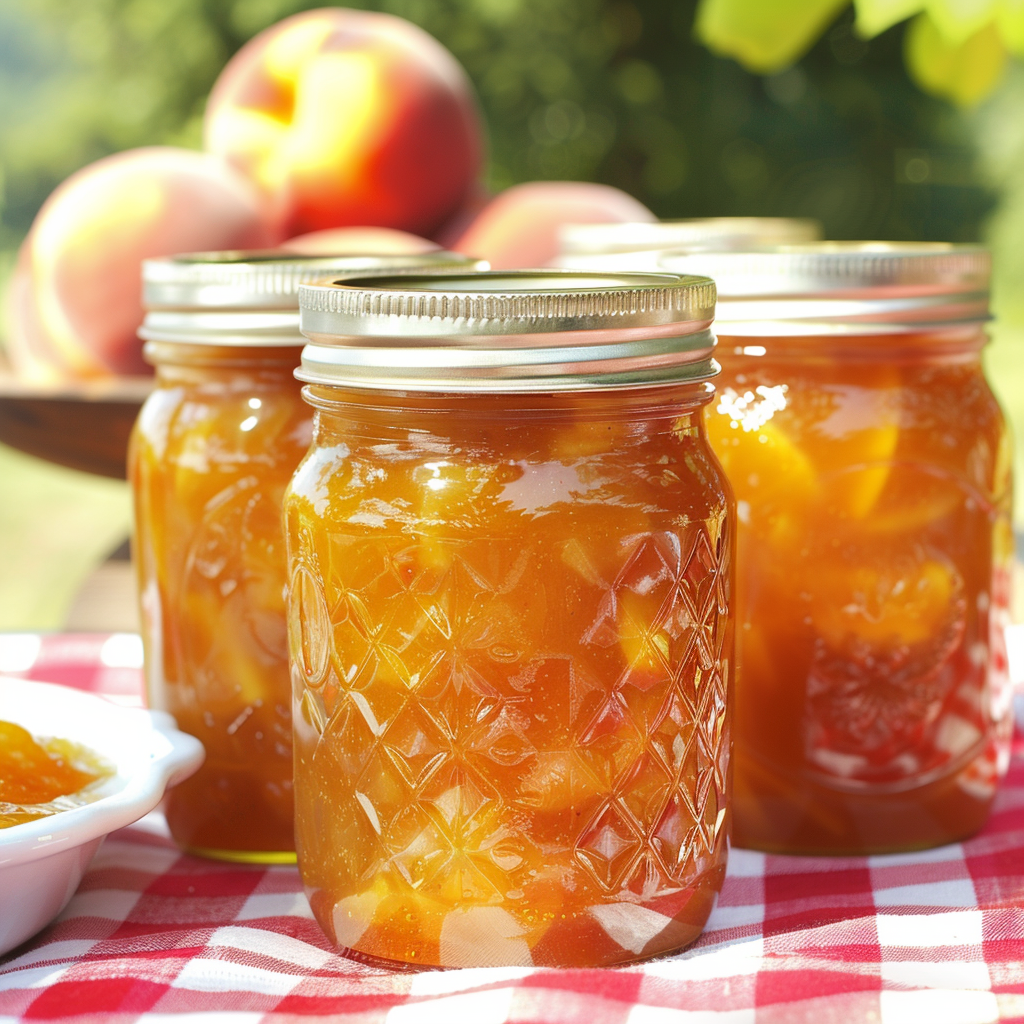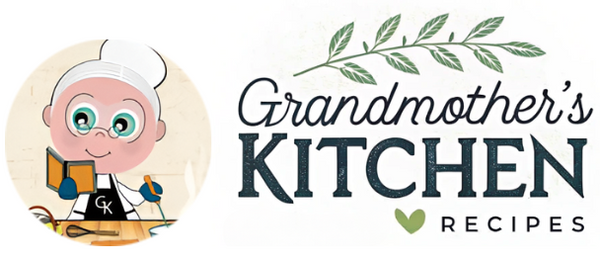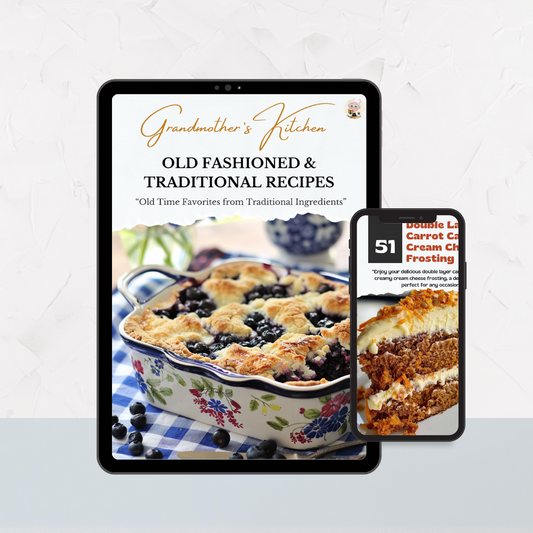Capture the Sweet Juicy Essence of Summer with Homemade Peach Jam

Share
Capture the Sweet Juicy Essence of Summer Peaches in a Jar
When I was a young mom, I embarked on a homesteading adventure, determined to learn all the skills needed to live off the land. My journey led me to an orchard where I spent a couple of years immersed in the world of peaches. From picking and pruning to thinning and processing, I learned every aspect of working with these delightful fruits. Canning became more than just a necessity; it was an adventure that I approached with excitement. There was something incredibly fulfilling about transforming the peaches I had carefully tended into jars of golden jam, capturing the essence of summer for my family to enjoy throughout the year. My life has taken many paths, but those days in the orchard, with the scent of ripe peaches in the air, remain some of my fondest memories.
Did You Know?
Peaches are a beloved fruit in both the United States and Canada. The U.S., particularly in states like Georgia and California, is one of the largest producers of peaches. Canada, especially in the Okanagan region of British Columbia, also boasts some of the best peaches, known for their sweet and juicy flavor. Peaches are rich in vitamins A and C, fiber, and antioxidants, making them not only a delicious treat but also a nutritious one.
Yield: 5 cups (approximately 5 pint or 10 half-pint jars)
Traditional Peach Jam
Ingredients:
- 4 cups peeled, pitted, and mashed peaches
- 4 cups granulated sugar
- 2 tablespoons lemon juice
- 1 package (1.75 ounces) fruit pectin
Instructions:
-
Prepare the Peaches: Wash, peel, pit, and mash the peaches. Measure 4 cups of mashed peaches into a large saucepan.
-
Add Lemon Juice and Pectin: Stir in the lemon juice and fruit pectin. Bring the mixture to a full rolling boil over high heat, stirring constantly.
-
Add Sugar: Add the sugar all at once. Return the mixture to a boil and boil hard for 1 minute, stirring constantly. Remove from heat and skim off any foam.
-
Fill Jars: Ladle the hot jam into prepared, sterilized jars, leaving 1/4-inch headspace. Wipe jar rims and cover with lids.
-
Process: Process the jars in a boiling water bath for 10 minutes. Remove and let cool. Check seals after 24 hours. Store in a cool, dark place.
Low-Sugar Peach Jam
Ingredients:
- 4 cups peeled, pitted, and mashed peaches
- 1 1/2 cups granulated sugar
- 2 tablespoons lemon juice
- 1 package (1.75 ounces) low-sugar pectin
Instructions:
-
Prepare the Peaches: Wash, peel, pit, and mash the peaches. Measure 4 cups of mashed peaches into a large saucepan.
-
Add Lemon Juice and Pectin: Stir in the lemon juice and low-sugar pectin. Bring the mixture to a full rolling boil over high heat, stirring constantly.
-
Add Sugar: Add the sugar gradually. Return the mixture to a boil and boil hard for 1 minute, stirring constantly. Remove from heat and skim off any foam.
-
Fill Jars: Ladle the hot jam into prepared, sterilized jars, leaving 1/4-inch headspace. Wipe jar rims and cover with lids.
-
Process: Process the jars in a boiling water bath for 10 minutes. Remove and let cool. Check seals after 24 hours. Store in a cool, dark place.
Nutritional Information (Per Tablespoon):
- Traditional Peach Jam: Calories: 50, Protein: 0g, Carbohydrates: 13g, Fat: 0g, Sugars: 12g
- Low-Sugar Peach Jam: Calories: 25, Protein: 0g, Carbohydrates: 6g, Fat: 0g, Sugars: 5g
Impact of Using Less Sugar or Honey on Jam Texture
When using less sugar or substituting sugar with honey in jam recipes, the texture of the jam may be affected in a few ways:
-
Setting and Firmness: Sugar plays a crucial role in helping the jam set and achieve the right consistency. It binds with the pectin in the fruit to create the gel-like texture of jam. Reducing sugar or using honey, which has a different chemical composition, can result in a softer set or a more liquid consistency.
-
Cooking Time: Jams with less sugar might require a longer cooking time to reach the desired thickness. However, prolonged cooking can sometimes lead to a more concentrated, potentially caramelized flavor and a darker color.
-
Moisture Content: Sugar helps to draw moisture out of the fruit, which is essential for achieving the right consistency. Using less sugar means more moisture remains in the jam, which can lead to a runnier texture.
-
Preservation: Sugar acts as a preservative by inhibiting the growth of microorganisms. Jams with less sugar might have a shorter shelf life and may need to be refrigerated or consumed more quickly.
-
Texture Adjustments: To compensate for reduced sugar, you can use low-sugar pectin, which is specifically designed to gel with less sugar. Alternatively, cooking the jam longer and ensuring proper sterilization and sealing of jars can help maintain quality.
When substituting honey for sugar, consider the following:
-
Honey's Water Content: Honey contains more water than granulated sugar, which can also contribute to a softer set. You might need to reduce the other liquid ingredients slightly to compensate.
-
Flavor Profile: Honey has a distinct flavor that can alter the taste of the jam, often adding a floral or caramel note, depending on the type of honey used.
By understanding these effects and making small adjustments, you can successfully create delicious jams with less sugar or honey, while still achieving a pleasing texture and preserving them safely.
Kitchen Tips, Great Ideas, How to Save Money
-
Choosing Peaches: For the best flavor, use fresh, ripe peaches. Visit local farmers' markets during peach season for the freshest options and potential savings.
-
Sterilizing Jars: Sterilize jars by boiling them in water for at least 10 minutes before filling. Proper sterilization is crucial for food safety.
-
Lemon Juice: Fresh lemon juice enhances flavor and helps the jam set. If you don't have fresh lemons, bottled lemon juice works well.
-
Texture Preference: For a smoother jam, use a food processor to mash the peaches. If you prefer a chunkier texture, mash by hand.
-
Reducing Foam: A small pat of butter added to the boiling jam can help reduce foaming, resulting in a clearer final product.
-
Testing for Set: To check if your jam is set, place a small amount on a chilled plate. If it wrinkles when pushed with your finger, it's ready.
-
Storage Tips: Store properly sealed jars in a cool, dark place for up to a year. Once opened, keep the jam in the refrigerator and use within a month.
-
Reuse and Recycle: Save money by reusing jars from store-bought products. Ensure they are properly sterilized before use.
-
Gift Idea: Homemade peach jam makes a wonderful gift. Decorate the jars with ribbons and homemade labels for a personal touch.
-
Experiment with Flavors: Add a twist to your peach jam by incorporating other fruits like raspberries or a splash of vanilla extract for a unique flavor.
Let’s Learn a Little About the Honey Process and Our Important Little Honey Bees
Honey is one of nature’s sweetest gifts, but the process of making honey is a fascinating and intricate task performed by honey bees. These industrious insects collect nectar from flowers and convert it into honey through a process of regurgitation and evaporation. The bees store the honey in wax cells within the hive, which serves as their food source during the winter months. Honey bees play a vital role in pollination, making them essential not only for producing honey but also for the health of our ecosystems and the production of many fruits and vegetables. Understanding and appreciating the work of honey bees can deepen our appreciation for the honey we use in our cooking and preserving.


